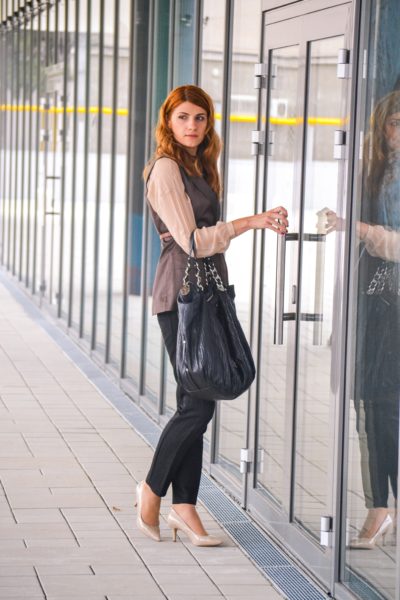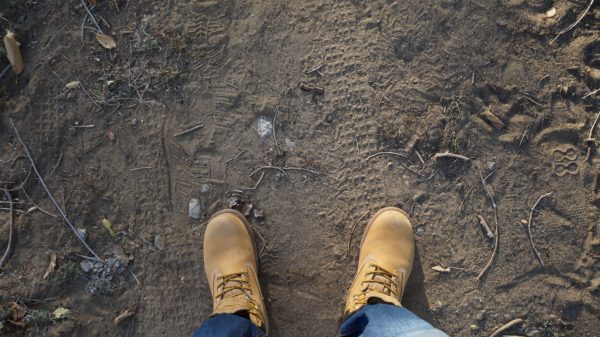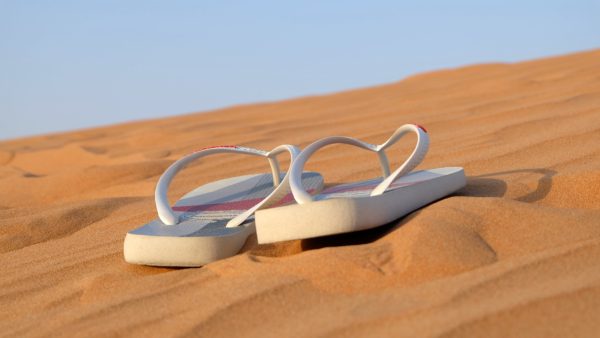The average person walks approximately 160,000 kilometres in their lifetime which highlights how important feet and foot health are. Shoes should not only fit your feet but allow them to function properly and be appropriate for the activity you are undertaking. These features play an important role in having healthy, strong and pain-free feet. This, in turn, will ensure you enjoy life and remain mobile and independent, no matter what your age.
The relationship between the feet and the body
Wearing the right sort of shoes and having good foot health is important for overall comfort, posture and mobility. It may sound obvious, but feet are the first thing that hit the ground and yet feelings of discomfort are often disregarded, especially when they are temporary or infrequent. If there are any issues with absorbing or distributing pressure and shock through the feet, then the rest of the body may feel the impact.
Flat, high arch or bony issues; weakness or tightness in muscles and joints; different foot types and structures also affect how the foot operates. Generally speaking having an excessively flat foot can lead to problems with compensation throughout the body. If the foot rolls in too much, it may have an impact across the body which is felt in the foot itself, the knees, through the hips and up into the back.
People with a high arch tend not to absorb shock as well so may experience problems in the ankles, knees and back as well uneven distribution of pressure throughout the feet.
These are two of the more extremes and there are lots of different types of foot types in between. People that have neutral or normal feet might also have issues for one reason or another due to external factors such as their jobs, sports, or poor footwear choices.
Why footwear is so important and the part it plays in foot health
Footwear changes how you walk and move. Feedback and fit are the two major things that affect this. If you were to run without shoes on, a different part of your feet would hit the ground than if you were wearing shoes. We adapt and change our walking and running because of the shoes we wear.
Structural deformities and skin issues can occur as a result of the shoes we choose. In certain cultures where people have never worn shoes, their feet develop to be wide and strong and rarely have foot-related complaints. That’s not necessarily practical in a majority of suburbia where shoes are required when walking around outside on concrete paths and roads.
However, today’s issue is one of design where shoes simply don’t fit people’s feet. This is particularly the case with female shoes which squeeze the toes in and excessively high heels lead to problems not only in the foot but also the legs and back.
Shoes with lots of, or too little, cushioning can be problematic for certain foot types, while the most common feature of shoes that people wear daily is that they are too tight or too small.
The shoes we choose affect how our feet operate. Prevention is better than cure, so choosing good footwear that also fits your feet properly are two of the most important contributing factors to good foot health.
Consider the activity you are undertaking and choose the appropriate shoe
Shoes should be considered as a long term investment. Nowadays it’s easy to have multiple pairs of cheaply made shoes. Consider that it might be worth spending a bit more on a well made pair of shoes that last for a year or two rather than a lower cost pair that you have to replace every three or four months.
When choosing footwear, focus on achieving a mix of fit and practicality. We appreciate that you need to wear certain shoes for particular situations and will want have options in your wardrobe so here are some tips about what to consider for different activities:
- Formal shoes – these usually tend to be higher heeled and tighter fitting shoes, which can cause physical stress on the feet and legs affecting not only your feet but your gait and posture too. Pressure applied in certain areas over a prolonged period of time can contribute to the build up of calluses and corns, the development of deformities such as bunions and claw toes, and thickening of the nails.
Even when sitting, pressure is still being applied to the feet and this force will cause problems. It’s important to allow the feet to spread. Substitute these more fashionable shoes when commuting or sitting at your desk with more accommodating shoes or save them for more formal occasions when you’re not standing or walking too much
- Athletic shoes – with sports-related footwear the two key considerations are what activity you want your shoes for and the level of cushioning and support in the shoe. active feet and The Athlete’s Foot are two stores where their trained staff will provide a service to fit shoes professionally.
- Protective footwear – shoes for the worksite must be well made due to the length of time spent on the feet every day. Lots of walking and pressure throughout the shift means having the right fitting boot, support and cushioning to accommodate rigors of job are a must.
- Summer footwear – sandals and thongs are not ideal for the feet but there are some good alternatives with arch support and firm fitting if you like to wear them. Options such as Archies, Orthaheel or Birkenstocks are a good alternative for a lot of people.
Lastly, try to alternate your shoes from day to day in order to change the pressure adjust your posture.
Shoes for children, adults and the elderly
Children
When children are developing, bare feet is encouraged as often as possible so that they are able to get sensory input and feedback from the ground to enable natural and strong foot development. When footwear is required, the best option is something with a thin sole that is flexible, to offer protection for the feet whilst not being restrictive and allowing the input from the ground.
Adults
People’s feet change with age and it’s important to be aware of any differences that develop in the feet such as aches and pains, bunions, calluses and so on.
Women’s feet also change with pregnancy; the hormones causing swelling and increased elasticity of the tissues in the feet leading to different footwear requirements.
Continually updating and rotating shoes helps to avoid any constant force caused by wearing the same shoes each day. Make sure that running and training shoes are updated regularly as they’re made of rubber which will wear out. Limit the amount of time spent in high heels as these will have a knock on effect on the foot in later years.
The elderly
Shoes that are easy to do up with velcro rather than laces, are not too heavy and are supportive on the ground to prevent falls and instability are the key factors to look for when buying shoes for older people.
How to spot if your shoes are causing issues and what to do about it
As the first things that touch the ground, feet absorb a lot of impact and pressure. If there are issues with the feet, they will be felt throughout the body including the back, legs and ankles. Making good choices about the shoes you buy and wear is therefore hugely important in supporting these important structures in the right way.
Complaints that might be caused by the shoes you wear and lead to to see you visit a Podiatrist include:
- Damage to the toenails or skin – blisters, corns or calluses, ingrown toenails (often caused by shoes that are too tight)
- Aches and pains – pain in the soft tissue of the feet particularly in the ball and heel that can be the result of shoes with a sole that is too thin
- Redness or rubbing – anywhere on the foot sometimes due to poorly fitting shoes.
Spending long periods of time in shoes that are not a good fit for the feet can contribute to problems in later life.
Be considerate and choose the right shoe for the right occasion and limit the amount of time spent in uncomfortable or ill-fitting shoes that exert continual pressure on the skin and foot structure; and can lead to discomfort throughout the body.
There are options from brands that have fashionable and comfortable shoes and if you’re experiencing problems, have a specialist assess your feet sooner rather than later.
Looking for new shoes? Try these sites
Below are some websites that you might find useful if you think that your footwear is causing pain and are looking to buy some new shoes:
- bared.com.au – useful if you’re looking for comfortable fashionable shoes for both men and women
- revereshoes.com.au – great affordable options for summer and winter shoes
- zierashoes.com/au – has options for casual and corporate for middle aged to elderly women
- frankie4.com.au – options for some great casual and work shoes for younger women
- podiatry.org.au – great resource for feet and footwear advice
We’d love to help you with any shoe questions you have. Please give us a call or send us an email and we’ll arrange for one of our Podiatrists to have a free 10 minute chat to answer any questions you have or alternatively book online HERE.







